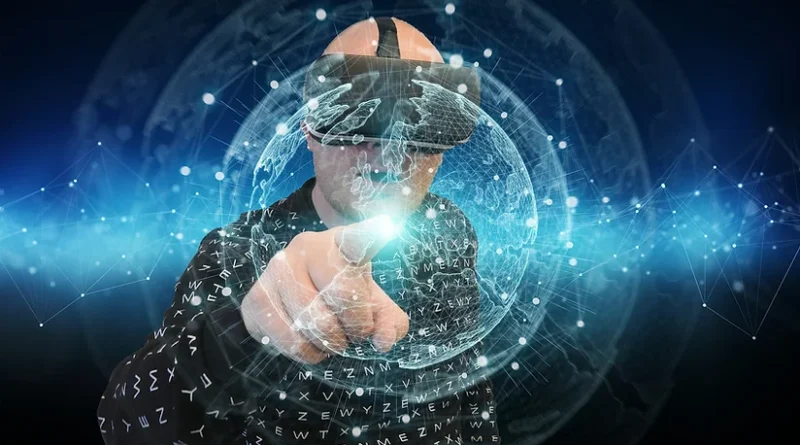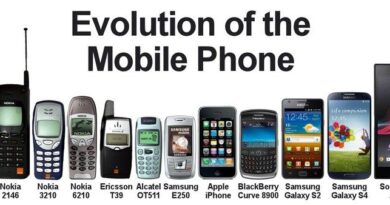The Rise of Virtual Reality: A New Era of Digital Interaction
|
Getting your Trinity Audio player ready...
|
Virtual Reality (VR) has transcended from science fiction into a groundbreaking technology, transforming the way we interact with digital environments. Once associated primarily with gaming, VR now finds applications across industries, from healthcare and education to real estate and social networking. With advances in VR hardware and software, the potential for immersive experiences has never been greater. This article delves into the rise of VR, its current applications, and how it is shaping the future of digital interaction.
What Is Virtual Reality?
Virtual Reality is a simulated experience that can be similar to or completely different from the real world. VR immerses users into a 3D environment, often using headsets equipped with sensors, motion tracking, and hand controllers. The goal of VR is to create a sense of presence, where users feel as though they are physically present in a virtual world, allowing for interaction and exploration.
While VR technology has existed in various forms since the 1960s, it wasn’t until recent advancements in computing power, display technology, and motion tracking that VR became accessible to consumers and industries alike. Modern VR systems, such as the Oculus Rift, HTC Vive, and PlayStation VR, offer high-definition visuals and realistic sound, creating a fully immersive experience.
How VR Works
Virtual Reality operates by tricking the brain into perceiving a digital environment as real. Here’s a breakdown of how VR technology works:
- Display and Visuals: VR headsets use stereoscopic displays that present two slightly different images to each eye, mimicking how we see the real world. The brain combines these images to create a sense of depth and immersion. High frame rates and low latency are crucial for preventing motion sickness and enhancing the realism of the experience.
- Motion Tracking: VR systems track the movements of the user’s head and body in real-time. This is typically achieved using external sensors or built-in accelerometers, gyroscopes, and cameras. The system adjusts the virtual environment based on these movements, allowing users to look around and explore their surroundings naturally.
- Haptic Feedback and Controllers: In addition to visual and auditory immersion, VR also uses haptic feedback through specialized controllers or gloves that allow users to interact with virtual objects. These devices vibrate or provide resistance when touching or manipulating objects, adding a layer of tactile realism.
- Sound: Spatial audio is a key component of VR, where sound cues are designed to change dynamically based on the user’s location and orientation in the virtual environment. This adds to the realism by replicating how sound behaves in the real world.
Applications of Virtual Reality
1. Gaming
Gaming has been the primary driver of VR adoption in the consumer market. VR gaming provides players with fully immersive experiences, allowing them to explore detailed virtual worlds, interact with objects, and engage in combat or puzzle-solving. Popular VR games, such as Beat Saber, Half-Life: Alyx, and The Elder Scrolls V: Skyrim VR, have demonstrated the potential of VR in creating unique and engaging experiences.
2. Healthcare
Virtual Reality is revolutionizing healthcare by offering new ways to treat patients and train medical professionals. Surgeons can use VR simulations to practice complex procedures in a risk-free environment, while therapists use VR to help patients with conditions like PTSD, anxiety, and phobias by exposing them to controlled virtual scenarios. VR is also being used in physical rehabilitation, allowing patients to perform exercises in a virtual space that motivates and monitors progress.
3. Education and Training
VR has opened new doors for education, offering students and professionals immersive learning experiences. From virtual field trips to historical landmarks to simulated lab experiments, VR enhances engagement and understanding. For example, medical students can dissect virtual cadavers, while engineering students can build and test virtual models. VR-based training is also valuable for industries like aviation, where pilots can train in flight simulators without real-world risks.
4. Real Estate
VR is transforming the real estate industry by offering virtual property tours. Prospective buyers can explore homes or commercial spaces from anywhere in the world without setting foot in the physical location. This technology is especially useful for architects and developers, allowing them to showcase buildings before they are constructed, offering clients a fully immersive preview of their future properties.
5. Retail and E-Commerce
The retail sector is embracing VR to provide customers with virtual shopping experiences. Shoppers can browse virtual stores, try on clothing, or visualize how furniture will look in their homes—all from the comfort of their own living rooms. VR enhances the online shopping experience by offering a level of interaction that traditional e-commerce cannot provide.
6. Entertainment and Media
VR is reshaping the entertainment landscape by offering new ways to experience movies, concerts, and live events. VR films place viewers in the center of the action, allowing them to look around and experience stories from different perspectives. Virtual concerts and sports events enable fans to attend without being physically present, providing a front-row seat experience from home.
7. Social Interaction
Virtual Reality is creating new avenues for social interaction, allowing users to meet and interact in virtual spaces. Platforms like VRChat and AltspaceVR offer social environments where users can create avatars, attend virtual events, and engage with others from around the world. This form of social interaction is especially valuable for people in different geographical locations, offering a sense of presence and connection that traditional video calls lack.
Challenges of Virtual Reality
1. High Costs
While VR technology has become more affordable in recent years, high-quality VR systems still require significant investments. The cost of headsets, controllers, and compatible computers can be prohibitive for many consumers. However, as technology advances and production costs decrease, VR is expected to become more accessible.
2. Motion Sickness
A common issue with VR is motion sickness, which occurs when there is a disconnect between the user’s physical movements and what they see in the virtual world. This can result in nausea, dizziness, and discomfort. Developers are working to address this issue by improving frame rates, reducing latency, and optimizing motion tracking.
3. Limited Content
Despite the growing popularity of VR, the availability of high-quality content remains limited. While the gaming industry has embraced VR, other sectors are still in the early stages of content development. For VR to become mainstream, a wider range of applications and experiences needs to be available.
4. Isolation
Some critics argue that VR can lead to social isolation, as users may become engrossed in virtual worlds at the expense of real-world interactions. However, with the rise of social VR platforms, the technology also has the potential to foster new forms of social interaction and community building.
The Future of Virtual Reality
The future of VR holds immense promise as it continues to evolve and integrate with other technologies like Artificial Intelligence (AI), Augmented Reality (AR), and 5G connectivity. The convergence of VR and AI will enable more dynamic and personalized virtual environments, where AI-driven characters can interact with users in more lifelike ways.
As 5G networks become more widespread, VR experiences will benefit from faster data transmission and lower latency, enabling real-time interactions and more complex virtual environments. In addition, the combination of VR and AR—often referred to as mixed reality—will blend the physical and digital worlds, creating even more immersive and interactive experiences.
The healthcare industry is expected to see significant growth in VR applications, from virtual surgery and therapy to mental health treatment. Education will continue to be transformed by VR, with immersive learning environments becoming a standard tool in classrooms and corporate training programs.
Moreover, as VR becomes more integrated into everyday life, we may see the rise of virtual workplaces, where employees collaborate and interact in fully immersive virtual offices.
Conclusion
Virtual Reality is ushering in a new era of digital interaction, with applications that extend far beyond gaming. From healthcare and education to retail and social interaction, VR is transforming how we engage with technology and the world around us. While challenges like high costs and motion sickness remain, the continued advancements in VR technology suggest a future where immersive virtual experiences are a common part of everyday life. As the technology matures, VR’s impact on society will only grow, offering exciting possibilities for entertainment, work, learning, and beyond.




